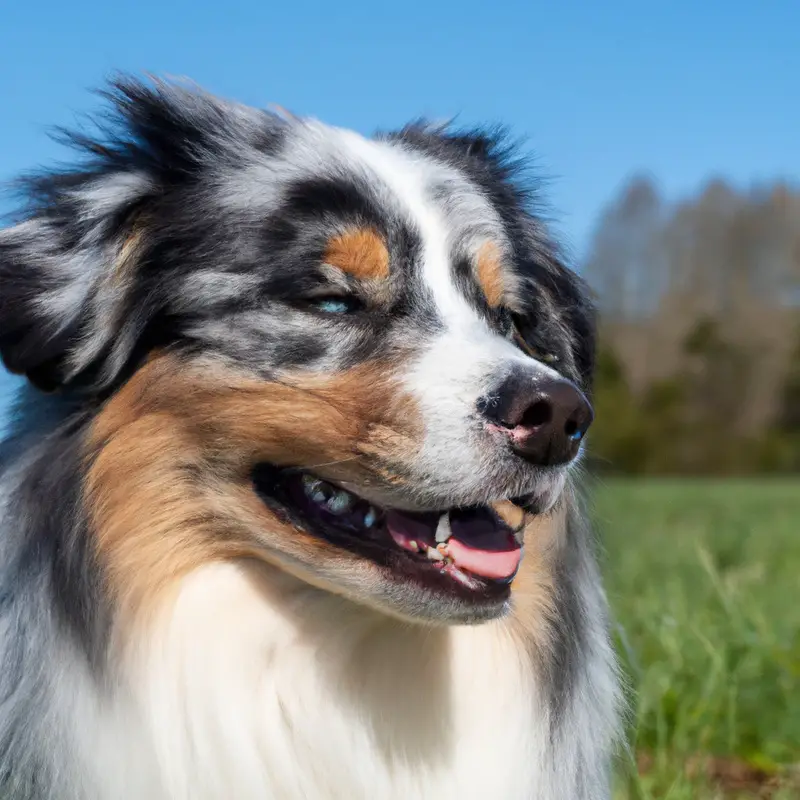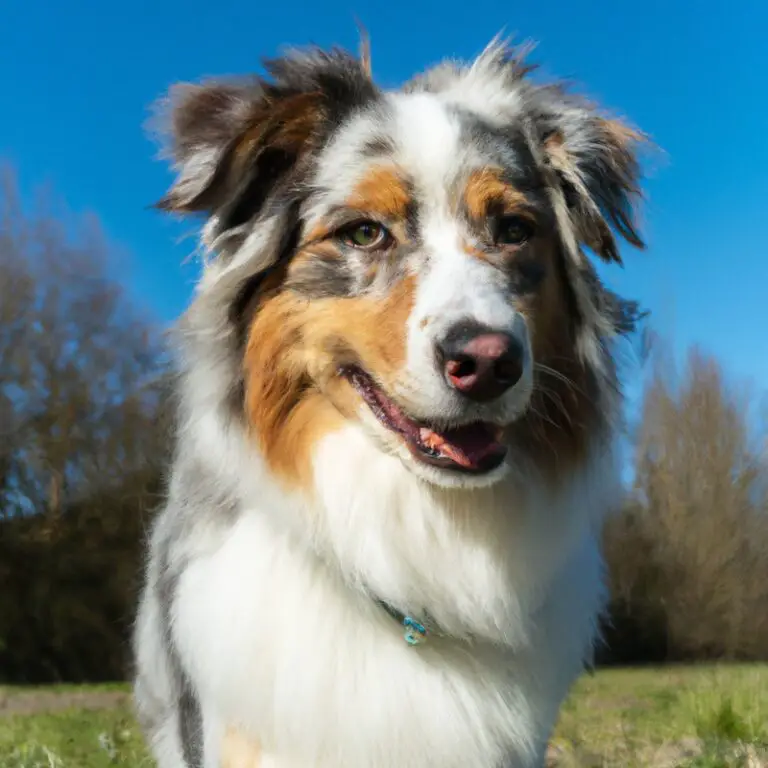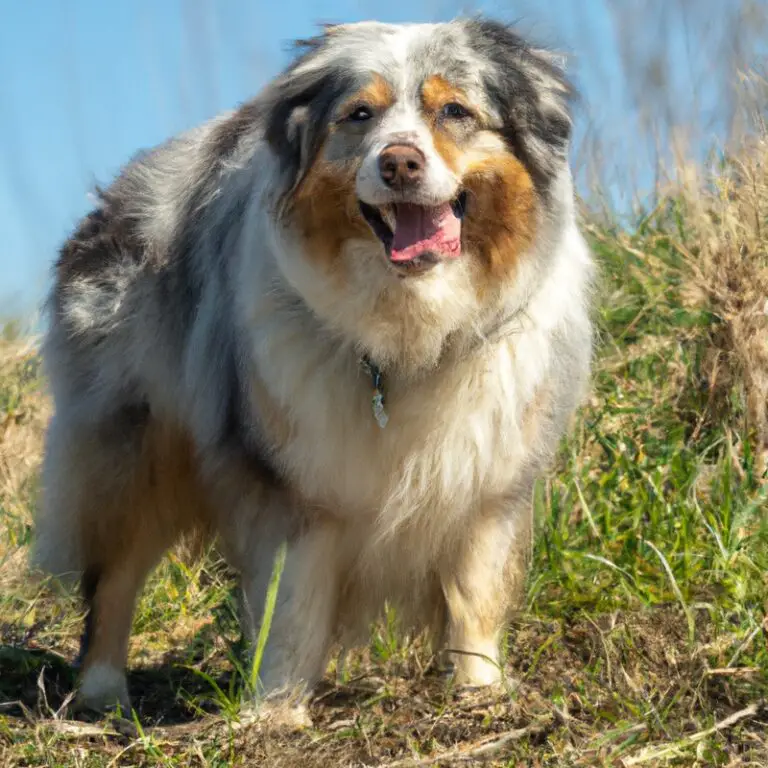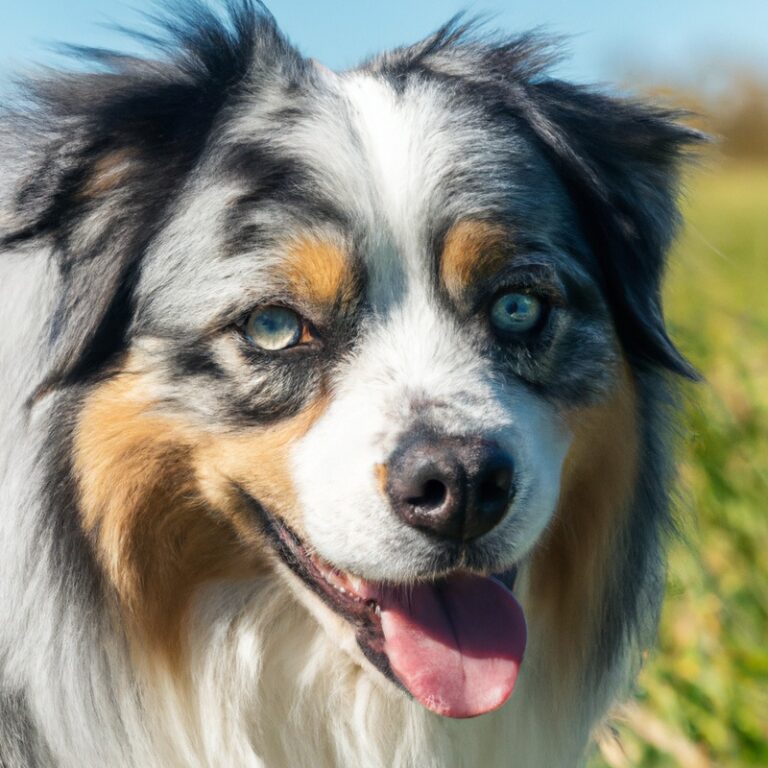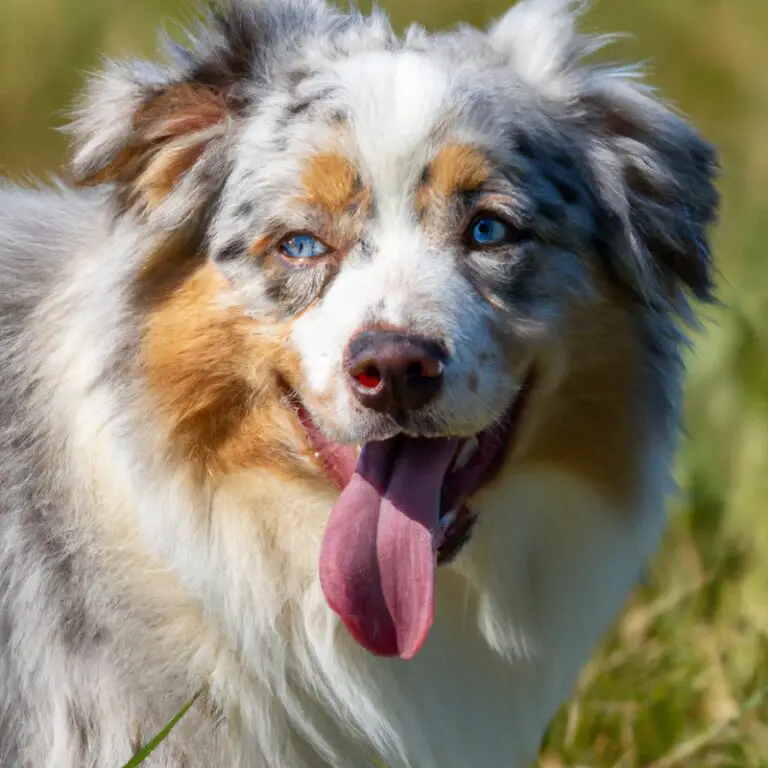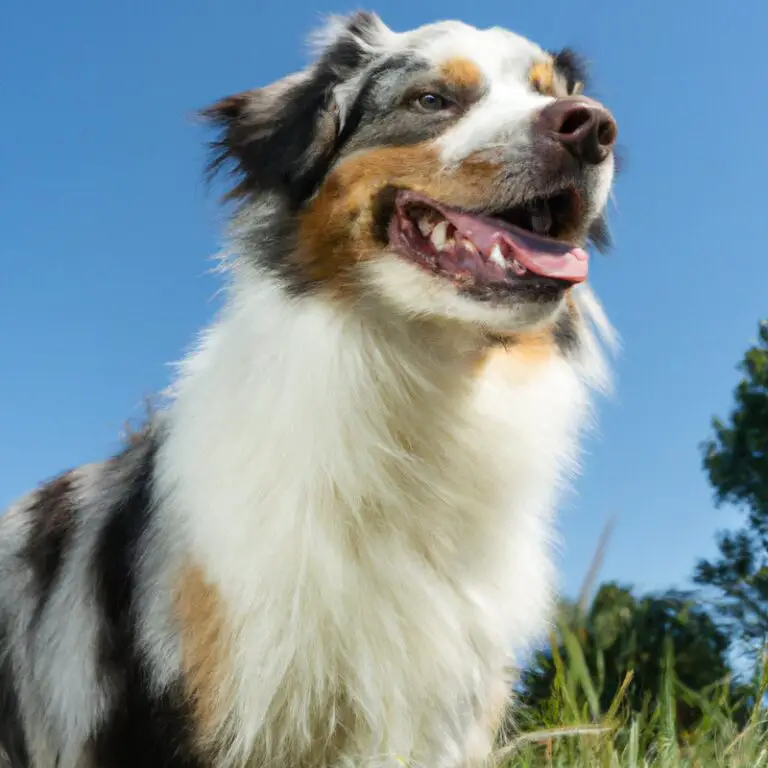Can Australian Shepherds Be Trained To Be Good With Small Animals Like Rabbits Or Guinea Pigs?
Key Takeaways:
- Australian Shepherds can be trained to coexist peacefully with small animals like rabbits or guinea pigs.
- Early socialization and proper training are key components in successfully introducing Australian Shepherds to small animals.
- Individual temperament and genetic predispositions can influence an Australian Shepherd’s behavior towards small animals.
- Supervision and gradual introductions are crucial when allowing Australian Shepherds to interact with rabbits or guinea pigs.
Are you a proud owner of an Australian Shepherd but worried about their compatibility with your small animals like rabbits or guinea pigs? Well, you’ve come to the right place! As a seasoned dog trainer and enthusiast, I’m here to shed some light on this fascinating topic.
Australian Shepherds are known for their intelligence and remarkable agility, but their instinctual behaviors can sometimes make introductions to small animals a challenge.
However, with proper training, early socialization, and a controlled environment, it is absolutely possible to nurture a positive relationship between your Australian Shepherd and your furry friends. So, let’s dive in and explore the techniques and strategies that can help your Australian Shepherd become a loving companion to your beloved small animals.
| Question | Answer |
| Topic | Can Australian Shepherds be trained to be good with small animals like rabbits or guinea pigs? |
| Training Condition | Australian Shepherds can be trained to be good with small animals. |
| Pros | – They are intelligent and can learn commands quickly. – They can be taught to differentiate between prey and family pets. – Early socialization and proper training can help in reducing prey drive. |
| Cons | – Some Australian Shepherds may have a strong prey drive and require extra training. – It can be challenging to completely eliminate natural instincts. – Supervision is always necessary when small animals are around. |
Understanding the Australian Shepherd breed
History and characteristics of Australian Shepherds
Australian Shepherds have a rich history and unique set of characteristics. Originally bred in the United States, they were used to herd livestock, especially sheep.
Despite their name, they do not come from Australia.
These dogs have a medium-sized build with a stocky and muscular frame. They have a double coat that is weather-resistant, with a variety of colors and patterns.
Their beautiful, almond-shaped eyes are known for their striking colors.
Australian Shepherds are highly intelligent and have a strong work ethic, making them excellent working dogs. They are known for their loyalty, agility, and energetic nature.
Their high energy levels require regular physical and mental exercise to keep them happy and healthy.
In addition to their working abilities, Australian Shepherds make wonderful family pets. They are known for their affectionate and playful nature, and they typically form strong bonds with their human companions.
They are also known to be good with children and other pets when properly socialized.
Overall, Australian Shepherds are a versatile and highly trainable breed. Their history as working dogs and their unique characteristics make them a popular choice for families and individuals who are active and involved in outdoor activities.
Energy levels and instinctual behaviors of Australian Shepherds
Australian Shepherds are known for their high energy levels and instinctual behaviors. They are an active and agile breed that thrives on physical exercise and mental stimulation.
It’s important to understand that Australian Shepherds have a strong herding instinct, which can influence their behavior around small animals like rabbits or guinea pigs.
This instinct may trigger their prey drive, causing them to chase or attempt to herd these smaller creatures. To manage their energy levels and instinctual behaviors, it’s crucial to provide Australian Shepherds with regular and varied exercise routines.
This can include activities such as daily walks, runs, or agility training.
Mental stimulation is also important and can be achieved through interactive toys, puzzle games, and obedience training sessions. When it comes to introducing Australian Shepherds to small animals, gradual and supervised interactions are essential.
It’s important to create a safe and controlled environment, ensuring that the small animals have a secure enclosure or separate space.
Building trust and positive associations between Australian Shepherds and small animals is crucial. Use positive reinforcement techniques, rewarding the dog for calm and gentle behavior around the small animals.
Treats, praise, and rewards can reinforce the desired behavior and help create positive experiences.
It’s important to recognize signs of prey drive and address them appropriately. This can include redirecting their attention to other activities or providing them with alternative outlets for their herding instincts, such as herding toys or obedience training exercises.
If you encounter challenges or need additional guidance, it’s recommended to seek help from professional trainers or behaviorists who specialize in working with Australian Shepherds.
Online communities and forums can also provide valuable training guidance and support.
Training Australian Shepherds
Importance of early socialization and exposure to small animals
Early socialization and exposure to small animals is vital for Australian Shepherds. This helps them develop positive associations and learn appropriate behaviors around these animals.
It teaches them to be gentle, calm, and non-threatening.
It also helps reduces the likelihood of fear or aggression towards small animals. Proper socialization should begin at a young age and should be gradual, supervised, and positive.
It is important to expose Australian Shepherds to different types of small animals, such as rabbits or guinea pigs, to ensure they can coexist peacefully in the future.

Positive reinforcement training techniques for Australian Shepherds
Positive reinforcement training techniques are highly effective when it comes to training Australian Shepherds. These techniques involve rewarding desired behaviors with treats, praise, or playtime.
This encourages them to repeat these behaviors in the future.
Positive reinforcement helps build a strong bond between you and your Australian Shepherd and makes training a positive and enjoyable experience for both of you.
Introducing Australian Shepherds to small animals
Gradual introductions and supervised interactions
Gradual introductions and supervised interactions are key when introducing Australian Shepherds to small animals like rabbits or guinea pigs. Instead of rushing the process, take it slow and allow both the dog and the small animal to get familiar with each other’s presence.
Start with short and controlled interactions, always keeping a close eye on their behavior.
This way, you can ensure the safety of both the dog and the small animal while they build a positive relationship. Gradual introductions and supervised interactions provide the opportunity for them to learn and adjust to each other’s presence in a controlled and safe environment.
Creating a safe and controlled environment for the animals
Creating a safe and controlled environment for your small animals is essential when introducing them to Australian Shepherds. Here are some important steps you can take:
- Separate spaces: Provide separate areas for your small animals and your Australian Shepherd. This could include separate rooms, enclosures, or cages.
- Secure enclosures: Ensure that your small animals’ enclosures are secure and escape-proof. Double-check that there are no gaps or holes that they can squeeze through.
- Supervise interactions: Always supervise interactions between your Australian Shepherd and your small animals. This allows you to intervene if necessary and prevent any potential harm.
- Use barriers: Use physical barriers, such as baby gates or playpens, to separate your Australian Shepherd from your small animals when they are together in the same room. This helps create a controlled environment.
- Positive reinforcement: When your Australian Shepherd exhibits calm and gentle behavior around your small animals, reward them with praise and treats. This reinforces positive behavior and creates a positive association.
- Training commands: Teach your Australian Shepherd basic commands, such as “leave it” or “stay,” to help control their impulses around your small animals. Practice these commands regularly to strengthen obedience.
- Managed introductions: Gradually introduce your Australian Shepherd to your small animals in a controlled manner. Start with short and supervised interactions, gradually increasing the duration as they become more comfortable with each other.
Remember, each Australian Shepherd is unique, and progress may vary. Be patient and observant, and always prioritize the safety of your small animals.
Seek guidance from professional trainers or behaviorists if needed.

Building trust and positive associations
Promoting positive experiences between Australian Shepherds and small animals
When it comes to promoting positive experiences between Australian Shepherds and small animals, there are a few things you can do. First, it’s important to ensure that your Australian Shepherd is properly socialized and exposed to small animals from a young age.
This will help them develop positive associations and learn appropriate behavior around these animals.
Positive reinforcement training techniques can also be highly effective in promoting positive interactions. By rewarding your Australian Shepherd for calm, gentle behavior around small animals, you can reinforce good habits and discourage any negative behaviors.
When introducing your Australian Shepherd to small animals, it’s best to do so gradually and under supervision.
Start with short, controlled interactions and gradually increase the duration and freedom. This helps both the dog and the small animal feel more comfortable and allows for positive experiences to be built.
Creating a safe and controlled environment is crucial for promoting positive interactions.
Make sure the small animals have a secure, separate space where they can retreat if needed. Provide plenty of supervised time for your Australian Shepherd to interact with the small animals in a controlled setting.
Using treats and rewards can also be helpful in reinforcing desired behavior.
Whenever your Australian Shepherd interacts calmly and positively with the small animals, reward them with treats or praise. This helps to reinforce the idea that good behavior leads to positive outcomes.
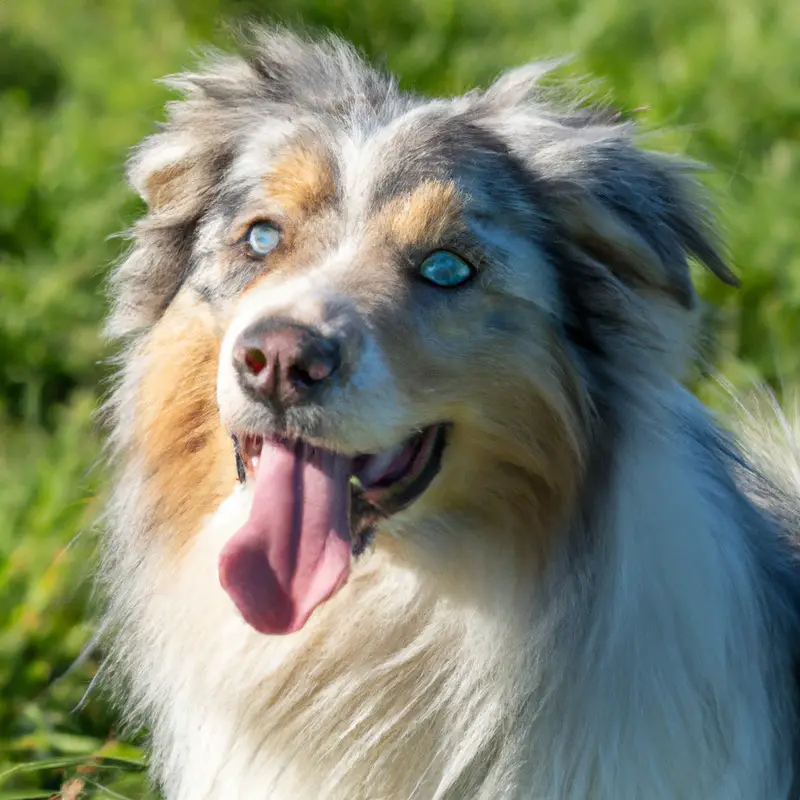
Using treats and rewards to reinforce desired behavior
When it comes to training Australian Shepherds, using treats and rewards can be a valuable tool in reinforcing desired behavior. By giving a treat or reward immediately after your Aussie performs the desired action, you are letting them know that they have done something right.
This positive reinforcement helps to strengthen the association between the behavior and the reward, making it more likely that they will repeat it in the future.
Remember to choose high-value treats that your Australian Shepherd really loves. This will make the reward even more enticing and motivating for them.
Use small, bite-sized treats so that you can give them quickly and easily during training sessions.
In addition to treats, you can also use other types of rewards, such as praise, petting, or playtime. Find out what your Aussie responds to best and use that as a reward alongside treats.
This will keep training sessions fun and engaging for your dog.
It’s important to be consistent with your rewards and only give them when your Aussie successfully performs the desired behavior. This will help them understand exactly what they are being rewarded for and encourage them to continue doing it.
Remember, using treats and rewards is a positive and effective way to reinforce desired behavior in your Australian Shepherd.
Incorporate them into your training sessions and watch as your furry friend becomes even more eager to please you!
Potential challenges and precautions
Precautions to take when introducing Australian Shepherds to small animals
When introducing Australian Shepherds to small animals, it’s important to take certain precautions to ensure everyone’s safety. Here are some steps you can take:
- Gradual introductions and supervised interactions: Start by gradually introducing the Australian Shepherd to the small animal in a controlled environment. Keep them on a leash and closely monitor their interactions to prevent any potential incidents.
- Creating a safe and controlled environment for the animals: Make sure the small animal has a secure, escape-proof enclosure where they can retreat if needed. Provide hiding spots and elevated areas for them to feel safe. Remove any objects or toys that may trigger the Australian Shepherd’s prey drive.
- Use positive reinforcement and rewards: Reward the Australian Shepherd for calm and gentle behavior around the small animal. Use treats, praise, and affection to reinforce positive associations. This way, the Australian Shepherd will learn that good behavior leads to rewards.
- Be aware of signs of prey drive: Australian Shepherds have a natural instinct for herding and chasing small animals. Keep an eye out for signs of prey drive, such as fixating, stalking, or lunging at the small animal. If you notice these behaviors, redirect their attention and distract them with toys or commands.
- Seek professional guidance if needed: If you’re unsure about how to introduce your Australian Shepherd to small animals or if you’re experiencing difficulties, consider seeking help from a professional dog trainer or animal behaviorist. They can provide guidance and support tailored to your specific situation.
- Be patient and consistent: Introducing Australian Shepherds to small animals requires time, patience, and consistency. It’s a gradual process, and every dog is different. Remember to take it slow and always prioritize the safety and well-being of both the Australian Shepherd and the small animal.
Recognizing signs of prey drive and addressing them appropriately
Recognizing signs of prey drive in Australian Shepherds is important for ensuring the safety of small animals like rabbits or guinea pigs. Some common signs include intense focus, stalking behavior, fixated gaze, and a high energy level.
When you notice these signs, it’s crucial to address them appropriately.
Redirecting their focus to a more appropriate activity, providing mental and physical stimulation, and reinforcing calm behavior can help manage prey drive. Remember, always supervise interactions and create a safe environment for both the Australian Shepherd and the small animals.
Professional guidance and resources
Seeking help from professional trainers or behaviorists
If you’re having difficulty training your Australian Shepherd to be good with small animals like rabbits or guinea pigs, seeking help from professional trainers or behaviorists can be a valuable resource. These experts have the knowledge and experience to assess your specific situation and provide personalized guidance.
They can help you understand your dog’s behaviors and develop a training plan that is effective and safe for both your dog and the small animals.
They can also teach you techniques for managing any challenges that may arise during the training process. Additionally, professional trainers and behaviorists can provide support and reassurance as you work towards building a positive relationship between your Australian Shepherd and your small animals.
Consider reaching out to local trainers or behaviorists for professional guidance and support.
Online communities and forums can also offer valuable advice and connect you with other Australian Shepherd owners facing similar challenges. Remember, seeking help from professionals and utilizing available resources can greatly increase your chances of success in training your Australian Shepherd to be good with small animals.
Online communities and forums for training guidance and support
When it comes to finding training guidance and support for Australian Shepherds, online communities and forums can be a valuable resource. These platforms allow you to connect with other dog owners, trainers, and enthusiasts who have experience with the breed.
You can ask questions, share your concerns, and receive advice from people who have faced similar challenges.
Additionally, online communities often provide access to training resources such as articles, videos, and recommended training techniques. Just make sure to verify the credibility and expertise of the sources you encounter.
By participating in these communities and forums, you can gain valuable insights and learn from the experiences of others.
The support and advice you receive can help you navigate the training process more effectively and address any specific concerns you may have about introducing Australian Shepherds to small animals. Remember, each dog is unique, so it’s important to adapt the advice you receive to suit the needs and temperament of your individual dog.
As you engage in these online communities and forums, it’s essential to maintain an open mind and be receptive to different perspectives.
You may come across varying opinions and approaches to training, so consider what aligns with your own values and goals for your dog. Overall, online communities and forums can be a fantastic resource for training guidance and support.
They provide a platform for sharing experiences, seeking advice, and accessing valuable resources to help you train your Australian Shepherd to be comfortable and respectful around small animals like rabbits or guinea pigs.
So, take advantage of these online resources to connect with fellow dog lovers and expand your knowledge of training techniques and best practices.
Final Verdict
Australian Shepherds can indeed be trained to be good with small animals like rabbits or guinea pigs. Understanding the breed’s history and characteristics, along with their energy levels and instinctual behaviors, is crucial in training them effectively.
Early socialization and positive reinforcement techniques are key in building trust and positive associations.
However, it is important to be aware of potential challenges and take precautions when introducing Australian Shepherds to small animals. Seeking professional guidance and utilizing online communities and forums can provide valuable support throughout the training process.
With the right training and guidance, Australian Shepherds can learn to peacefully coexist with small animals.

